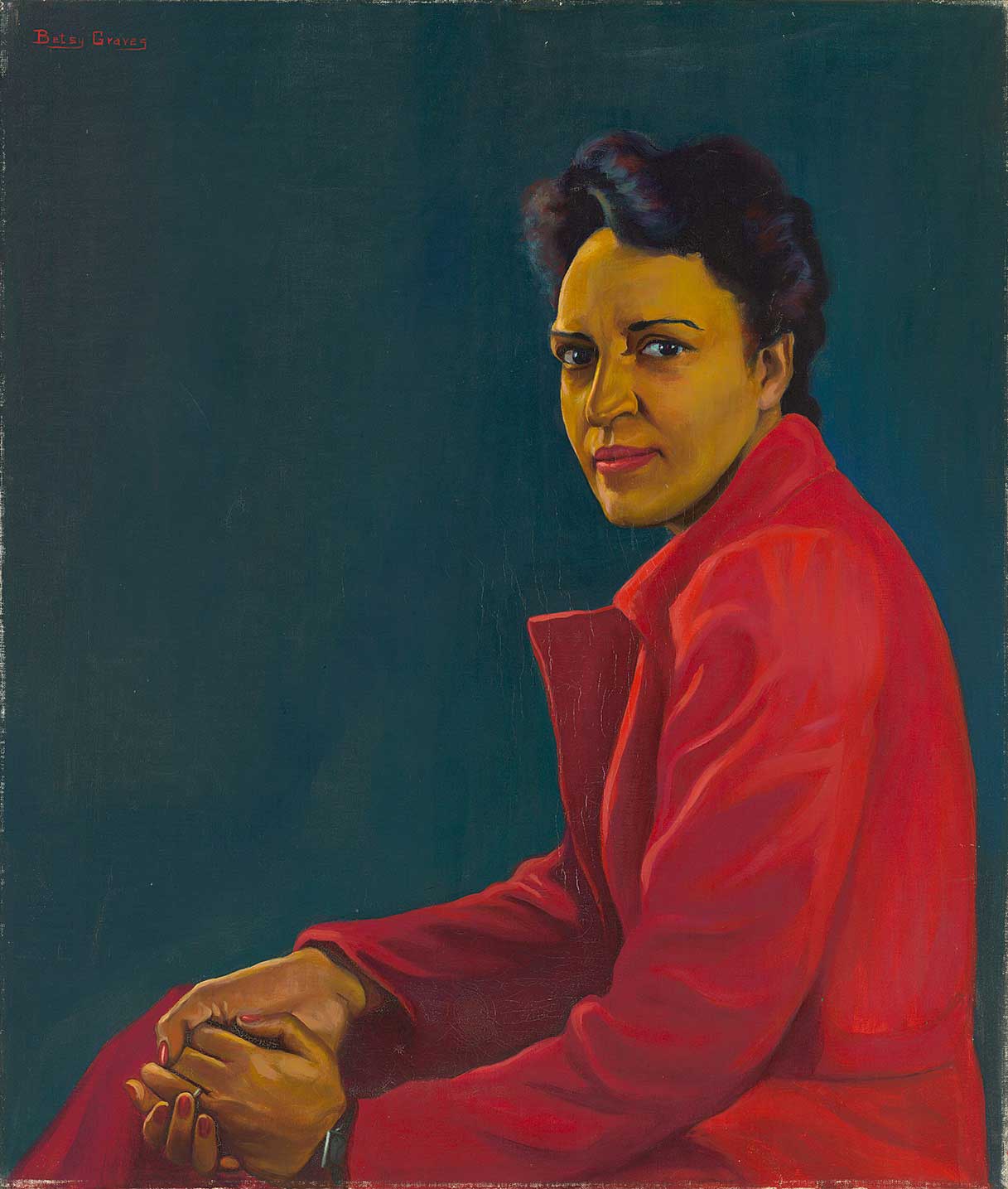Fighting Prejudice through Portraiture with the Harmon Foundation Collection

The Harmon Foundation Collection, one of the treasures of the National Portrait Gallery’s permanent collection, comprises a group of more than forty portraits of prominent African Americans. The portraits were part of an unprecedented attempt in the 1940s and 1950s to counter racist stereotypes and racial prejudice through portraiture.
William E. Harmon, a Euro-American real estate developer established the Harmon Foundation in 1922, in New York. His aim was to recognize African American achievements, not only in the fine arts, but also in such fields as business, education, farming, literature, music, race relations, religious service, and science. In 1944, the foundation, then under the direction of Mary Beattie Brady, commissioned Euro-American artist Betsy Graves Reyneau and African American artist Laura Wheeler Waring to create a series of portraits of accomplished contemporary African Americans. The resulting exhibition, Portraits of Outstanding Americans of Negro Origin, had the express goal of reversing racial intolerance, ignorance, and bigotry by illustrating the accomplishments of these notable sitters. The subjects included botanist and inventor George Washington Carver; educator Mary McLeod Bethune; singer and actor Paul Robeson; Brigadier General Benjamin Oliver Davis, the first African American general in the U.S. military; and writers W.E.B. Du Bois, and James Weldon Johnson.
Portraits of Outstanding Americans of Negro Origin premiered at the Smithsonian Institution on May 2, 1944. Several of the exhibition’s sitters attended the opening ceremony, notably Howard University President Mordecai Wyatt Johnson, pioneering doctor and scientist Charles Drew, and writer and scholar Alain Locke. Also in attendance were United States Vice President Henry Wallace and First Lady Eleanor Roosevelt. Roosevelt endorsed the exhibition in her daily column the next day, writing that the portraits and the achievements of the sitters were of equal interest. By the close of the exhibition, approximately 21,500 people had visited. The response was so favorable that the Harmon Foundation decided to tour the exhibition around the country. For the next ten years, Portraits of Outstanding Americans of Negro Origin, with the periodic addition of new portraits, traveled to museums, historical societies, municipal auditoriums, and community centers around the United States. The public response was overwhelmingly positive in every venue.
Following the Supreme Court’s 1954 Brown vs. Board of Education ruling abolishing legal segregation, the tour was discontinued on the Harmon Foundation’s assumption that racial tolerance and understanding had been successfully attained. Although it is evident today that the exhibition did not eradicate racial fears and tension in the United States, it did increase the public’s awareness of the important contributions African Americans were making.
When the Harmon Foundation discontinued the tour, the majority of its collection was placed in storage. In June 1966, arrangements were made to transfer ownership of forty-one of the original fifty portraits to the National Portrait Gallery. While not all of the museum’s works are currently on display, Betsy Graves Reyneau’s paintings of George Washington Carver, Thurgood Marshall, Marian Anderson, and Mary Church Terrell, as well as Laura Wheeler Waring’s painting of James Weldon Johnson, are all on view in our Struggle for Justice exhibition, on the second floor, and the Twentieth-Century Americans exhibition, on the third floor, features Reyneau’s portraits of Mary McLeod Bethune, Richmond Barthe, and Charles Drew.
To see the full collection, visit http://npg.si.edu/portraits/search?edan_q=harmon+foundation&edan_local=1&edan_fq%5B0%5D=p.edanmdm.descriptivenonrepeating.unit_code%3A%22NPG%22&incCAP=false&op=Search.
If you are interested in learning more about Reyneau’s portraits of George Washington Carver, Marian Anderson, and William Ayers Campbell, please visit our Portrait Spotlights section in Classroom Resources: http://npg.si.edu/teachers/classroom-resources.